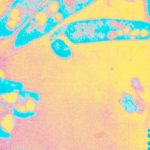Link to Pubmed [PMID] – 10759860
Eur. J. Biochem. 2000 Apr;267(8):2345-53
Crotoxin is a potent presynaptic neurotoxin from the venom of the rattlesnake Crotalus durissus terrificus. It is composed of the noncovalent and synergistic association of a weakly toxic phospholipase A2, CB, and a nontoxic three-chain subunit, CA, which increases the lethal potency of CB. The A-56.36 mAb is able to dissociate the crotoxin complex by binding to the CA subunit, thereby neutralizing its toxicity. Because A-56.36 and CB show sequence homology and both compete for binding to CA, we postulated that A-56.36 and CB had overlapping binding sites on CA. By screening random phage-displayed libraries with the mAb, phagotopes bearing the (D/S)GY(A/G) or AAXI consensus motifs were selected. They all bound A-56.36 in ELISA and competed with CA for mAb binding, although with different reactivities. When mice were immunized with the selected clones, polyclonal sera reacting with CA were induced. Interestingly, the raised antibodies retained the crotoxin-dissociating effect of A-56.36, suggesting that the selected peptides may be used to produce neutralizing antibodies. By combining these data with the molecular modeling of CA, it appeared that the functional epitope of A-56.36 on CA was conformational, one subregion being discontinuous and corresponding to the first family of peptides, the other subregion being continuous and composed of amino acids of the second family. Phage-displayed peptides corresponding to fragments of the two identified regions on CA reacted with A-56.36 and with CB. Our data support the hypothesis that A-56.36 and CB interact with common regions of CA, and highlight residues which are likely to be critical for CA-CB complex formation.
